The best headlamps: tested and rated for hiking, camping and running
The best headlamps illuminate your campsite nights, predawn summit raids and backcountry expeditions
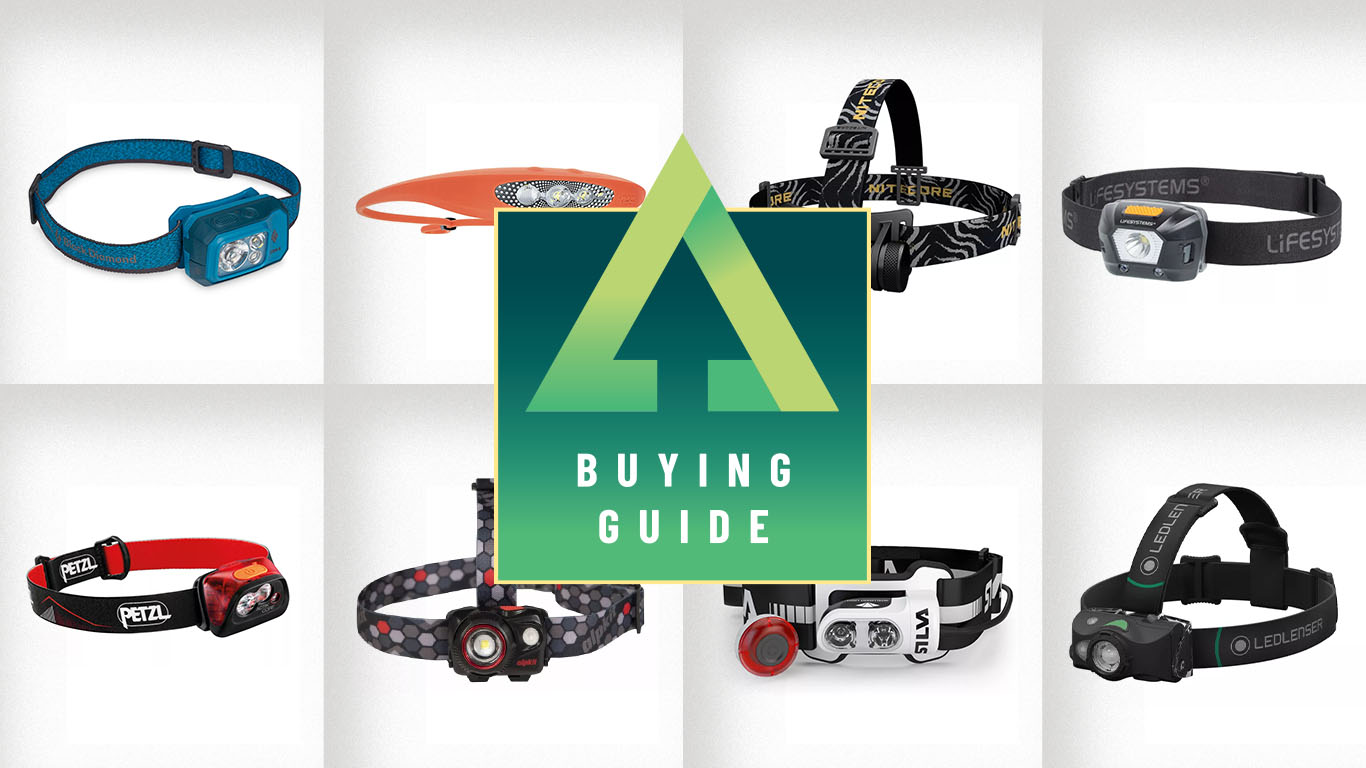
As the camping season gets into full swing and runners enjoy the opportunity to head out in the late evening, the best headlamps are worth their weight in gold. Whether you're off on a family camping vacation or heading into the backcountry for a wild camping expedition, the handsfree light of one (or two – always good to have a spare) of the best head torches will be indispensable.
A headlamp is a compact and durable little torch that straps around your head, giving you hands free vision whether you're trail running at night, wild camping or setting out on a pre-dawn summit bagging raid in the mountains. The best headlamps tend to boast multiple beam settings, colors and these days often feature a rechargeable lithium ion battery, while hybrid options boast this and standard AAA compatibility.
One of the main features to look out for is the lumen output of your chosen headlamp. The higher the lumens, the brighter the beam. Anything above 200 lumens should be fine for those setting out in their best hiking boots, though cyclists, trail runners and anyone else who is heading out at speed may want in excess of 300 lumens.
For more on what to look for when choosing the best head torch for your adventures, see our guide at the bottom of this page. We start our roundup of the best headlamps available in 2025. We think the Black Diamond Storm 500R is the finest headlamp money can buy for its versatility and impressive feature set.
The best headlamps
You can trust Advnture
Best headlamps overall
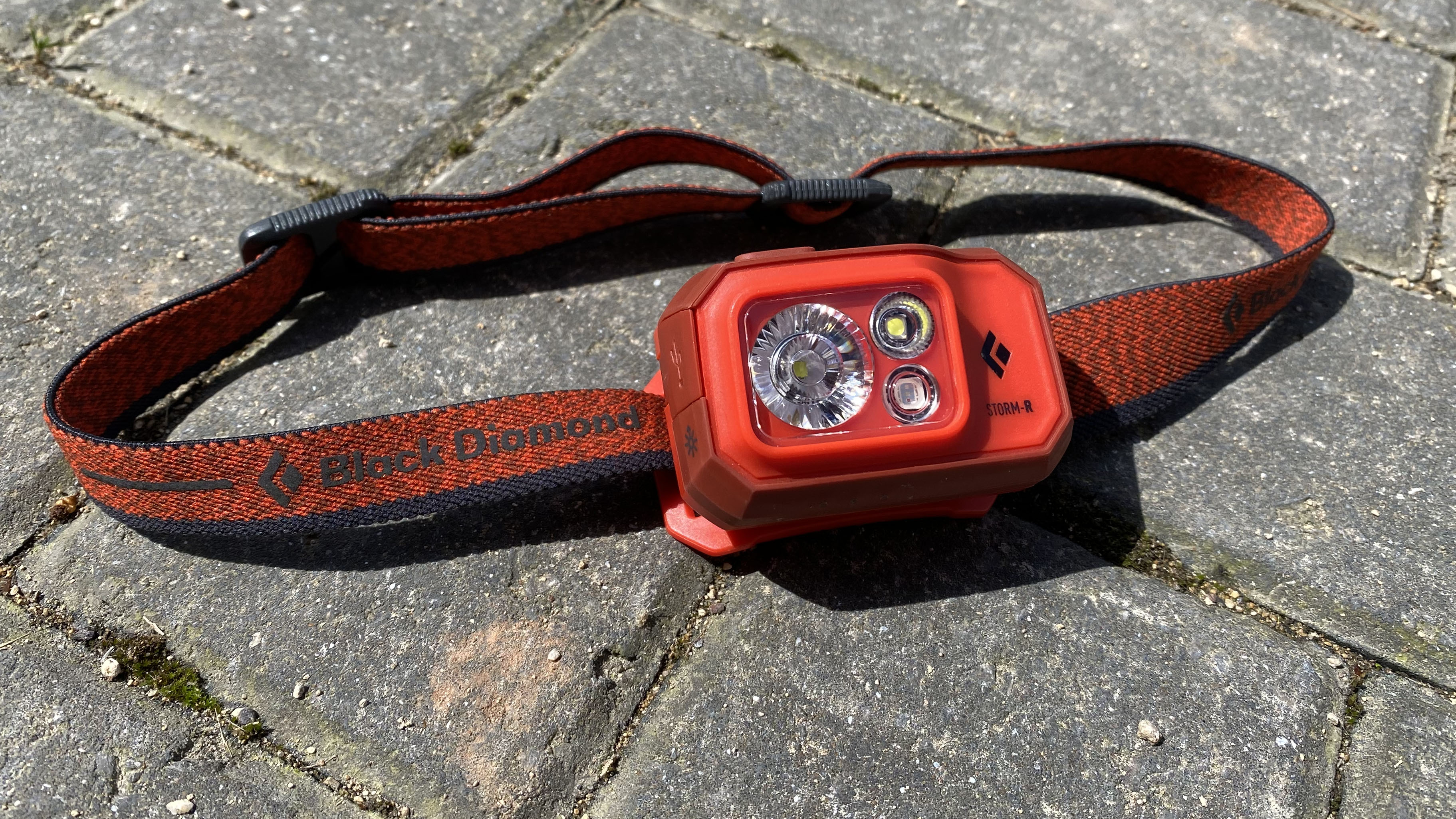
Specifications
Reasons to buy
Reasons to avoid
The Black Diamond Storm 500R the most powerful and multi-featured product in the Utah brand’s new multi-purpose, rechargeable R series of headlamps. It’s designed for adventurers who value versatility and performance alongside the size and weight of a small unit. Featuring proximity, distance and night vision settings, as well as strobe and brightness memory, it's got plenty to shout about for such a compact package and we loved testing it out during our runs, hikes and camping trips.
At 100g, it's light enough to take trail running, yet its many features make it suitable for hiking, mountaineering, climbing, snow sports and camping too. We found its 500 lumens maximum brightness and beam distance of 120 metres gave it excellent trail finding ability and it will last seven hours on this setting. Cold conditions are no trouble for its lithium-ion battery, which recharges quickly via micro-USB, so there's no need to carry additional batteries.
The Storm is waterproof tested under one meter of water for 30 minutes, giving it a rating of IP67, so it will cope with a serious downpour no problem. We found that the recycled elastic headband was comfortable and kept our beam stable. A super little product that further enhances the already solid reputation Black Diamond's workhorse Storm series.
Read our full Black Diamond Storm 500R review
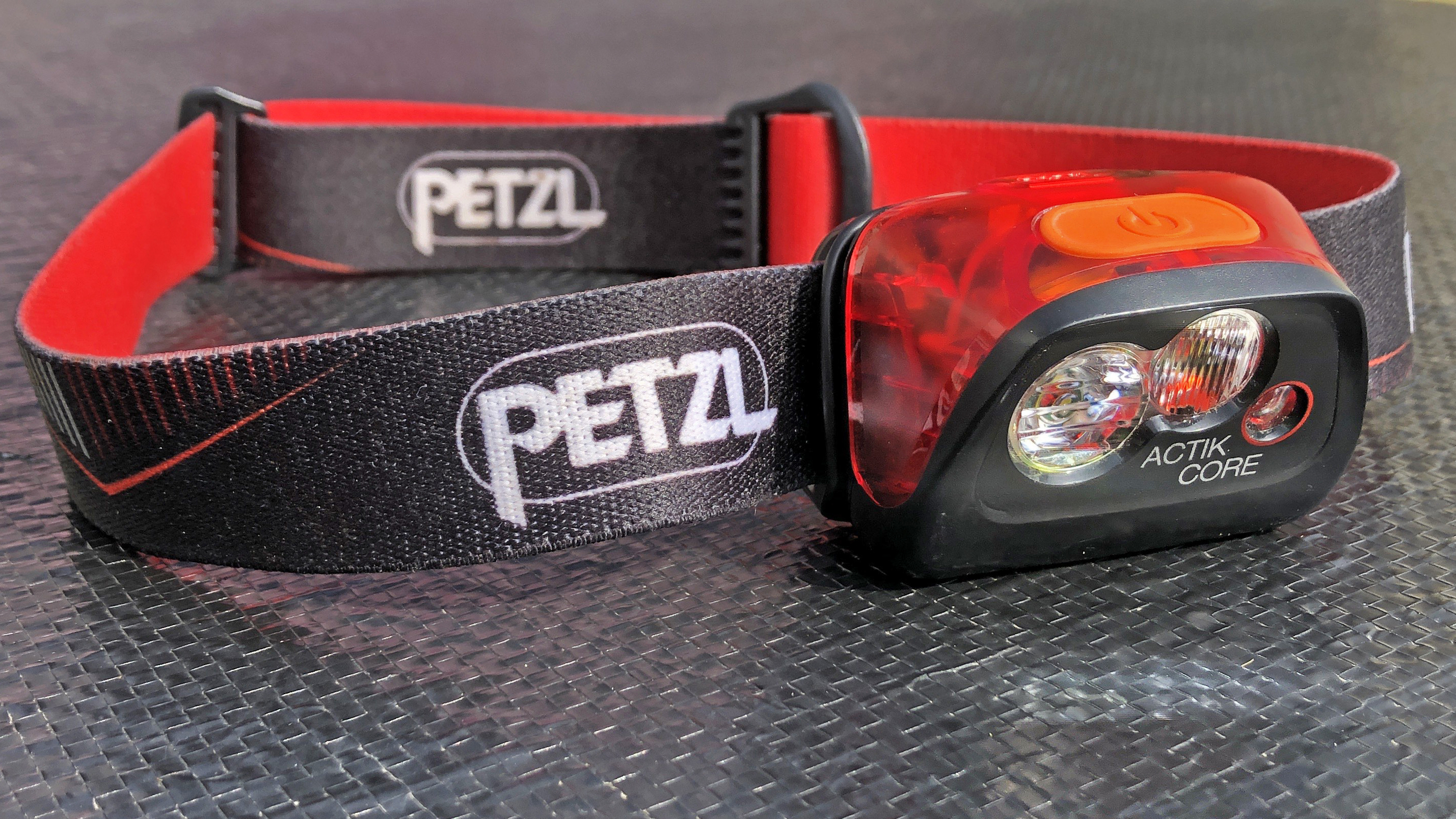
2. Petzl Actik Core 450
Our expert review:
Specifications
Reasons to buy
Reasons to avoid
The multi-beam design of the Actik, combined with its muscular 450 lumen punch when it’s on full gas, make this model the standout performer for those in need of a headlamp for activities in more extreme environments, such as on mountainsides in the dark.
Of course, you don’t have to be clinging to the eyebrows of the Eiger at midnight to appreciate this lovely lightweight head torch, which we found to be also ideal for trail runs, while cross country skiers and backpackers will get great use out of it too. Using accessories (sold separately), we were even able to mount the lamp on helmets and bikes. It boasts three white-light brightness options, two beam patterns (flood or mixed), a red light and strobe option, all of which can be toggled though by clicking a single button large and easily located button.
It has a reflective headband (which we found to be good for safety on road) and red lighting to preserve night vision. The hybrid concept design enabled us to swap between the main rechargeable battery and three AAAs, so we never ran out of juice throughout our test period. It also has a lock function, which stopped us turning it on accidentally in our bag, a common feature among the best head torches.
Best rechargeable headlamps
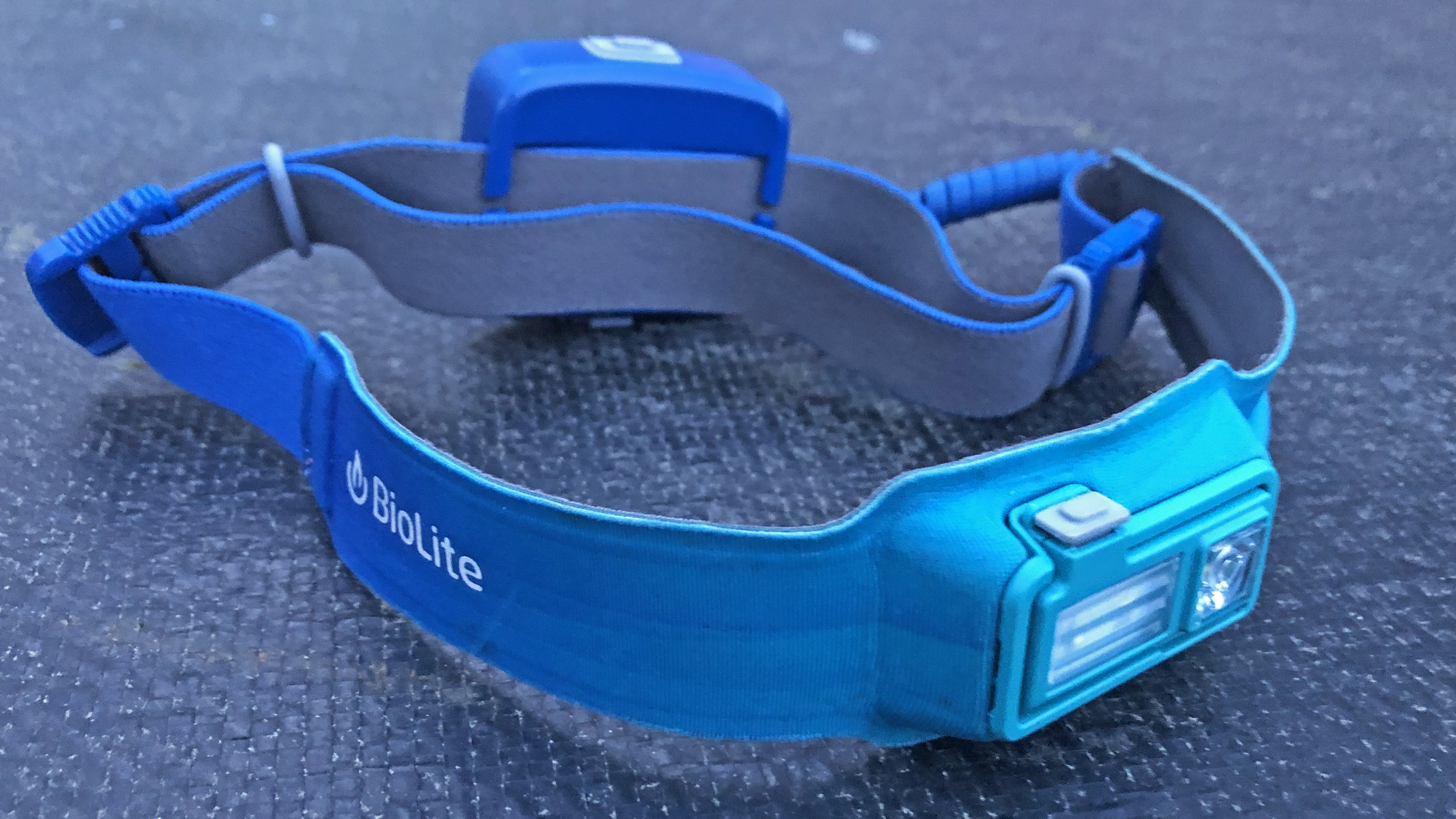
Specifications
Reasons to buy
Reasons to avoid
Available in several color options, this attractively priced headlamp from Biolite is very lightweight and comfortable to wear for long periods. The super slim front light attaches to a rechargeable battery unit on the back of the product via cabling that’s mostly integrated into the elasticated material of the headband. We found that the low-profile, nicely balanced design, coupled with the comfortable and easy to adjust harness means that this headlamp doesn’t bounce at all, even when we were running and jumping along technical trails. The simple-to-use light can be angled up and down within its casing for night running and hiking, when you might want to direct the beam closer to the ground.
The BioLite 425 has a really rich range of functions, which we think makes it the perfect, versatile tool for dark nights, with flood, spot and strobe options at different levels of white brightness, up to a more-than-adequate 425 lumens. There’s also a red front flood mode that will allow you to find your feet in a pitch-black tent without waking everyone else up, or to check a map or telescope setting without blowing your night vision. The back-mounted battery unit has a red safety light, which made us visible from behind during night hikes or runs along lanes and roads shared with traffic. We were also able to set it to strobe (better and more energy efficient) or flood.
The whole unit light can be locked to prevent accidental turn-on during transit, and there’s a low-power warning system. The burn time is impressive, up to 60 hours on low mode, but there is no capacity for using standard batteries, so if you’re on a multiday backpacking adventure, you’ll need to take a powerbank to recharge it. It’s splashproof, but can’t be submerged in water, and you need to be careful to ensure the rubber plug is properly inserted in the recharging port on the battery unit.
Read our full BioLite HeadLamp 425 review
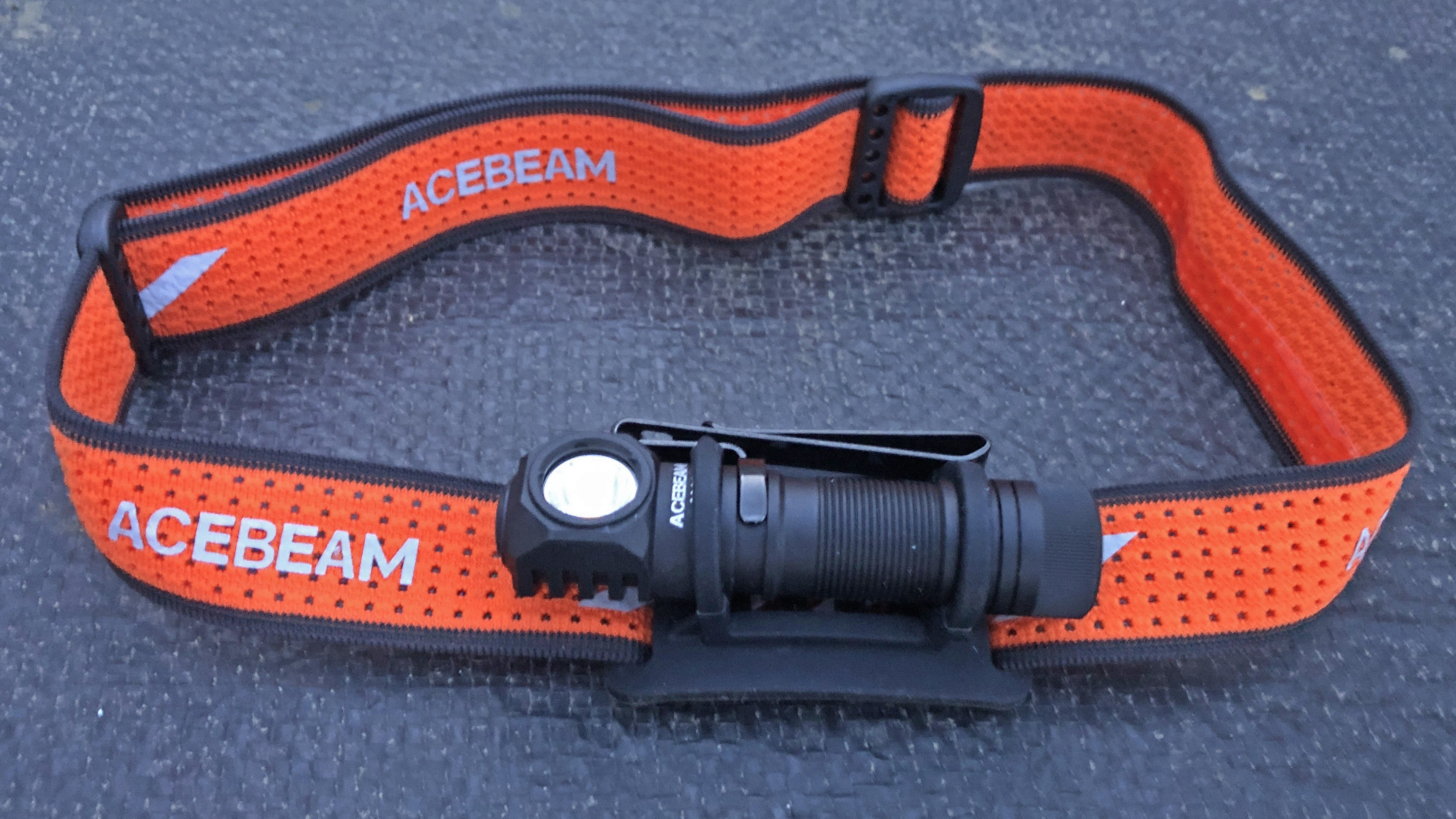
Specifications
Reasons to buy
Reasons to avoid
Versatility is the major selling point of this innovative and brilliantly designed little torch, which is lighter than a tennis ball. We wore it as a headlamp, used it as a mini handheld flashlight, mounted it on our chests via a sturdy clip and positioned it on metal surfaces thanks to an integrated magnet in the tail. The build quality is very robust, too, and the whole unit is dust-, impact- and waterproof to 2 meters.
The lighting unit is powered by a single AA battery – the H16 comes with a USB-C rechargeable battery and cable that can be plugged into any USB port, but we found that ability to use standard AAs as back ups makes this a really useful torch for multiday adventures. The burn time is impressive, especially for a single-battery torch.
There are various white-light brightness options. The modes are easy to toggle through, but all operate on a uniform basis, and there’s no capability to switch between flood and spot options. Another downside is the lack of a color beam such as red, which we think is always useful when you don’t want to lose your night vision.
However, the 519A LED light produces a 5000K beam, which is soft and non-glaring, and has a Color Rendering Index (CRI) rating of over 90 (the highest possible is 100), so it reveals objects at almost the same level of color detail as sunlight.
All the weight sits on the front, which we found resulted in some minor bouncing when running, and it’s a little bit of a fiddle to adjust the angle of tilt once the unit is in the headband holster. The fabric of the head harness is highly breathable, however, and it has an anti-slip strip of grippy silicon along the front, which minimizes movement. The headband is also high-vis, and has reflective features for safety while running on roads at night.
Read our full review of the AceBeam H16 headlamp here.
Headlamps for hiking
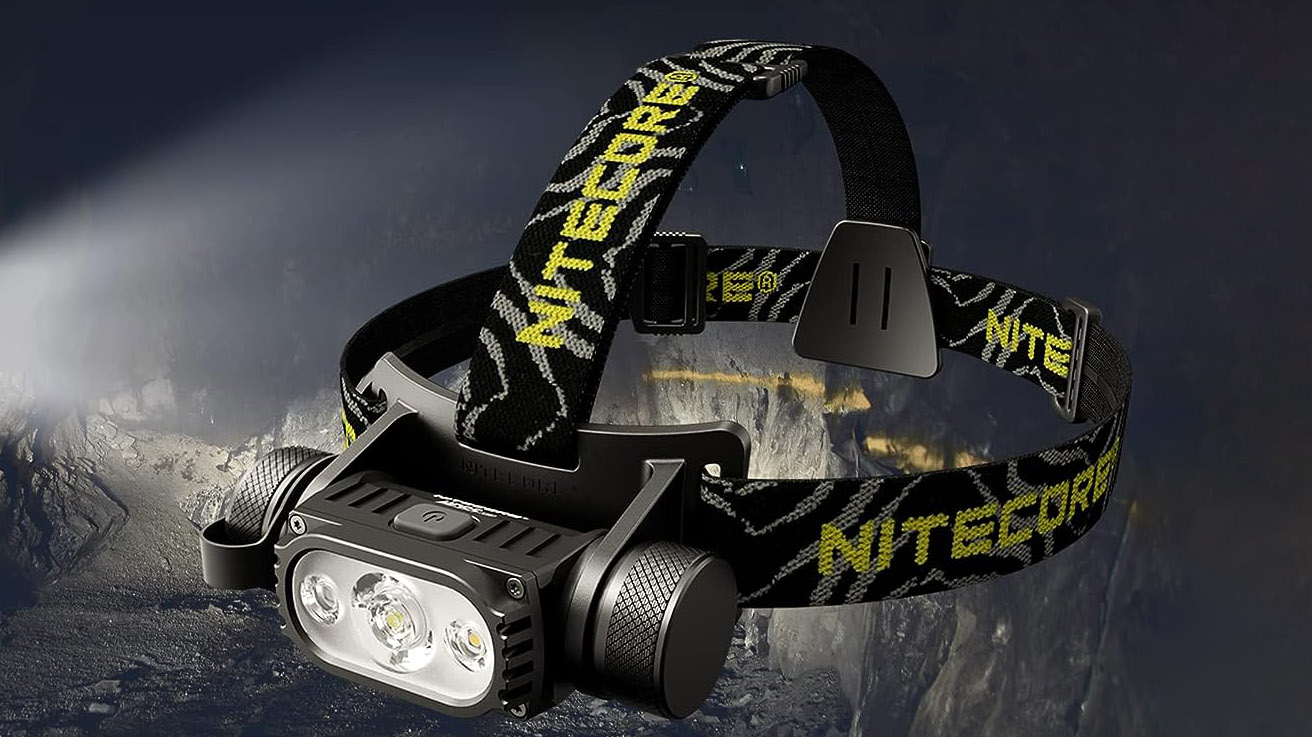
Specifications
Reasons to buy
Reasons to avoid
The Nitecore HC65 headlamp’s headline-grabbing specs include its ultra-bright max output of 1000 lumens and its impressive IPX8-rated waterproofing. But take one look at this beast and you can see it is built for serious outdoor use, with an anodised military-grade aluminium casing that feels extremely rugged.
The headlamp itself boasts multiple light settings, ranging from turbo mode – which throws the 1000 lumen max output up to 110m, with a burn time of about an hour – through to ultralow, which restricts performance to just a single lumen but can keep this up for an impressive 800 hours. There is also auxiliary white and red-light illumination for proximity work, which we found was ideal for tent use.
The HC65 is powered by a rechargeable 18650 lithium battery with a 3400mAh capacity, supplied with the headlamp. Handily, we were able to charge it in situ via a micro-USB port, which is hidden behind a screw-down metal cap at one end of the lamp unit. A similar cap at the other end reveals the battery compartment, which can also take 2 x CR123 batteries.
This isn’t the lightest headlamp around, but carried comfortably on our heads, helped by a secure three-point headband. The lamp unit swivels smoothly through a full 180 degrees of adjustment. It is also fully waterproof, which makes it a very practical headlamp for wet and wild conditions.
Read our full Nitecore HC65 review
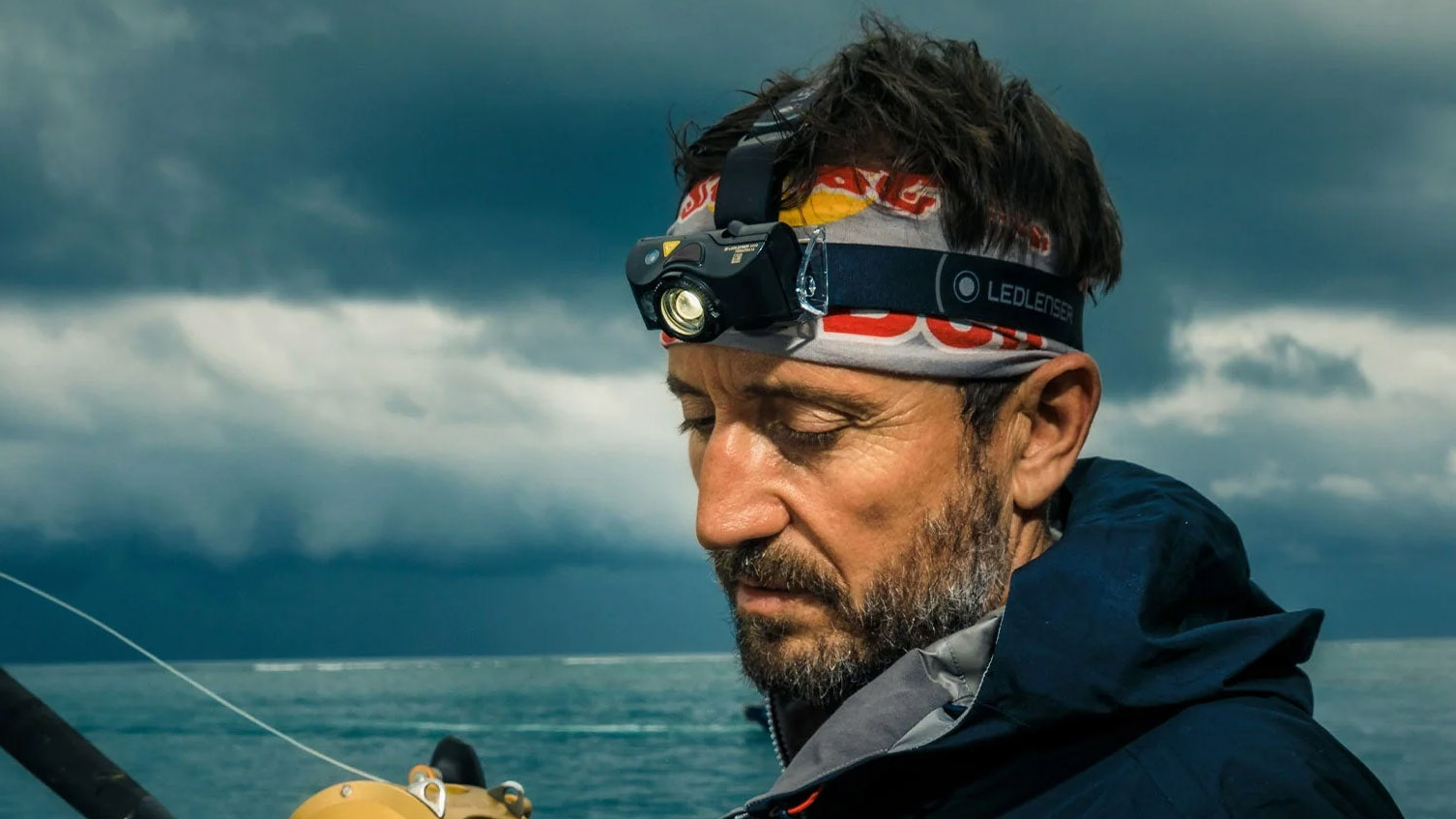
Specifications
Reasons to buy
Reasons to avoid
If you need a versatile headlamp for a multitude of different uses and activities – say, one that offers proximity lighting for moving around in camp, plus dynamic settings for hiking on the move and a spotlight beam for picking out distant objectives – the LEDLenser MH8 is an ideal option. It features boost, high, medium and low power modes, as well as a strobe setting, plus red, green and blue ambient light modes.
But the MH8 is also equipped with the brand’s patented focusing technology, which employs a rotating LED bezel housing that enabled us to instantly switch from an all-round flood beam to a pinpoint spotlight. Though the max output is an impressive 600 lumens, that only applies to boost mode, which provides 30 seconds of illumination and can throw a light up to 200 metres. At high power in energy-saving mode, we got 400 lumens.
We also liked the fact that the MH8 uses a rechargeable battery pack, which can be charged via the supplied USB cable without needing to remove the battery or disassemble the headlamp in any way. The MH8 can also be used with two standard AA batteries as well.
Though it isn’t the lightest or most compact headlamp, it is very comfortable to use, thanks to a wide and easily adjustable headband with an additional over-the-top strap. Overall, this is an impressive unit with a range of practical light modes and excellent all-round illumination, one of the best headlamps around.
Budget headlamps
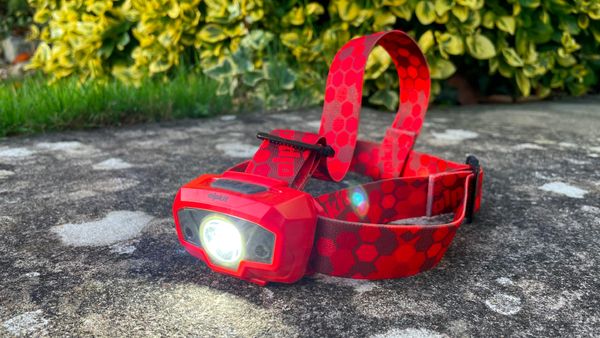
Specifications
Reasons to buy
Reasons to avoid
The excellent-value Alpkit Viper headtorch weighs slightly on the heavy side, tipping the scales at 106g (with batteries), but it has the addition of an overhead strap for extra security, which we found to be particularly good when using it for running. It’s comfortable to wear and easy to adjust, but we found that the plastic against our foreheads could get a bit sweaty on warmer evenings. The Viper is waterproof to IPX6 – so it can handle heavy rain.
The maximum brightness is 240 lumens, casting a beam over 115 metres for up to 5 hours, which is impressive, and the medium setting of 105 lumens is a useful back up for walking and running on easier trails and roads. There’s also a low mode of 20 lumens and a strobe mode. The Alpkit Viper also boasts a light sensor mode which automatically adjusts the brightness level according to how light it is around you, so we were able to get the main beam in the dark and the side light in brighter conditions. This is great but the sensor doesn’t get it right 100% of the time, so in these situations you can simply turn it off. Power comes from three AAA batteries. Alpkit are B-Corp certified, Living Wage Employers and part of 1% percent for the Planet.
Read our full Alpkit Viper review
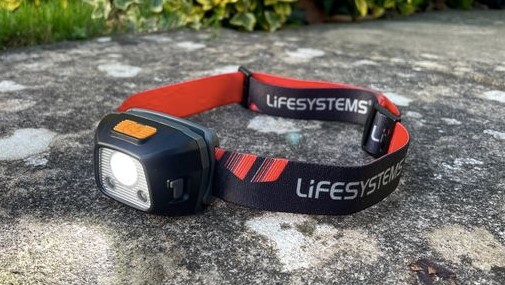
Specifications
Reasons to buy
Reasons to avoid
Really good value at $35/£30, the Intensity 280 is also very light, weighing just 89g. We found it was comfy on our foreheads, easy to adjust and impressively waterproof, with an IPX6 rating – good for torrential rain. The on/off button is large and easy to use with gloves and cold hands.
The max setting is a very useable 280 lumens, projecting a beam over 90 metres for a nice long 5.5 hours. It also has an 80-lumen medium setting, with a range of 47 metres and burn time of up to 11 hours, which is very useable for running slowly or walking on easy trails. The 6-lumen emergency setting with 13-metre beam is not very bright, but lasts for nearly 6 days.
There’s also a red light and a strobe option too. The Intensity 280 has an SOS setting in morse code (so three long flashes, three short, three long), which could save your life one day. The battery is rechargeable only and we were able to charge it while the light was on, using a portable charger and charging cable if needed. There’s also a handy charging status light on the side.
Read our full Lifesystems Intensity 280 review
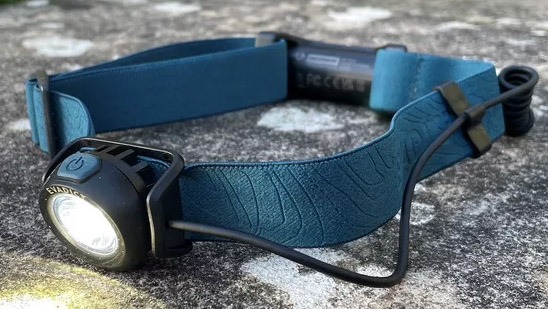
Specifications
Reasons to buy
Reasons to avoid
Although its price tag is modest, the Evadict Ontrail 250 weighs a little on the heavier side (107g). The headband is comfy and easy to adjust but it’s plastic against the forehead, which we found wasn't as comfy or sweat-absorbing as fabric. It’s waterproof enough for moderate showers at IPX4 standard. Max power is 250 lumens, which projects a beam over 85 meters for up to 4.5 hours. There’s a medium setting of 120 lumens, which is good for easy paths and roads, and an emergency setting of 60 lumens. But the tiny lamp has a limited range of motion through just three angles, and we found the small button makes it trickier to operate – especially while wearing gloves.
The battery is rechargeable only and it is quite large on the back of the head. We thought the two strap holders would be uncomfortable but it actually feels fine. There’s also a constant or flashing red LED on the back for road safety. You can also turn it off, and it ingeniously doubles up as the charge status indicator when plugged in – a very nice touch. You can also still use the head torch while charging it via a portable charger.
Read our full Decathlon Evadict Ontrail 250 review
Headlamps for trail running
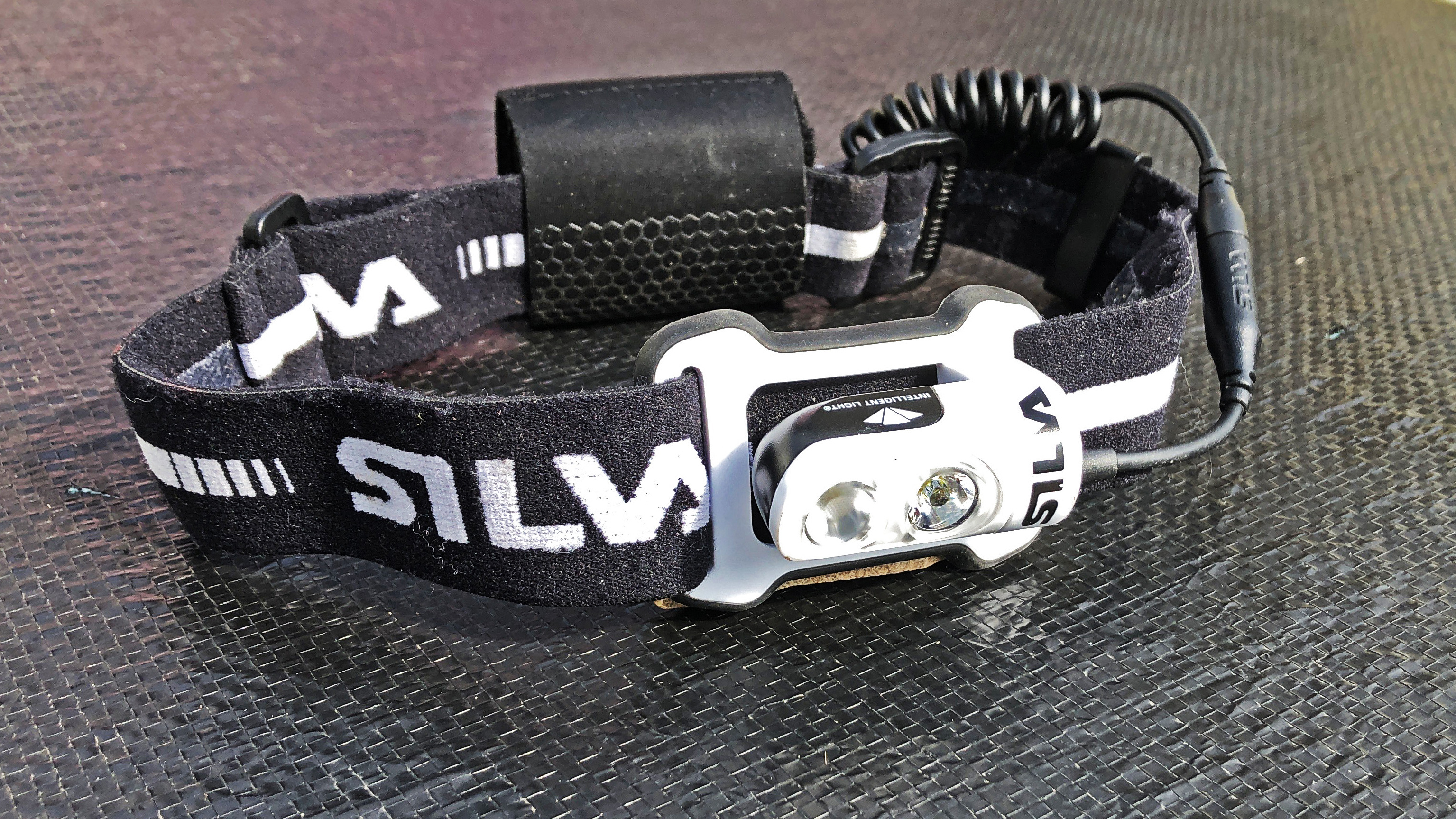
Specifications
Reasons to buy
Reasons to avoid
Silva’s brand new head torch is designed specifically for runners – and we’d go so far as to say it’s the best headlamp we’ve ever run with. Extremely well balanced, it’s a low-weight light we almost forgot we were wearing, until we turned towards something reflective and got a blinding blast of the 400-lumen beam back at us. Comfort levels have been prioritized in the design of this super smart piece of kit, which boasts a broad harness band, with a silicone lining strip to keep it in firmly in place and extra textile padding where required to prevent rubbing or hotspots. The rear battery housing features a backward facing safety light (which can be constant or set to pulse), to alert vehicles to your presence on dark lanes.
There are three models within the new range: the standard Trail Runner Free, the Trail Runner Free H and the Trail Runner Free Ultra. The difference lies in the battery pack, with the first only taking AAA batteries, the H working with a 1.15Ah Hybrid Battery, and the Ultra coming with a longlife 4Ah Hybrid Battery, which has a remaining-charge indicator.
All three models have the same maximum output (400 lumens) and, as well as being easy to swivel up and down, they all feature the Silva Intelligent Light system, which uses a double beam comprised of a long-reach spotlight to illuminate what awaits on the trail up ahead, and a wide-angle floodlight so you can see what’s going on immediately around your feet. All that’s missing is a colour tint option, which would allow you to check things without shattering your night vision – generally not a priority for trail runners.
Read our full Silva Trail Runner Free review
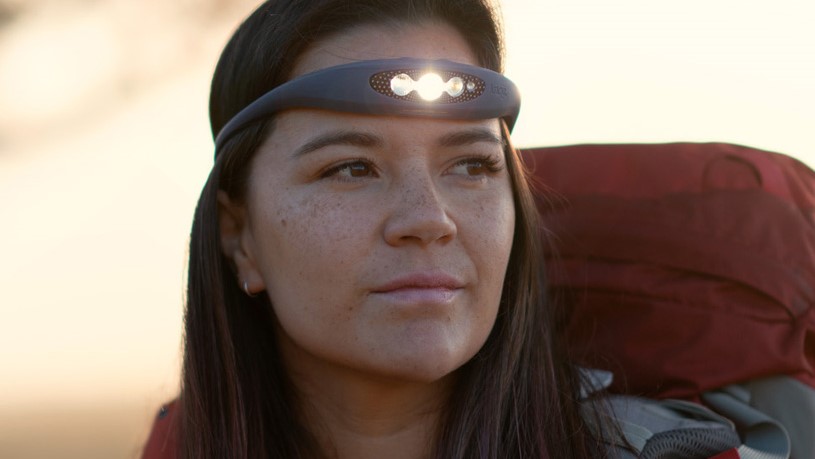
11. Knog Bilby
Our expert review:
Specifications
Reasons to buy
Reasons to avoid
Well known for their popular line of cycling accessories, Knog takes a new approach to headlamps. Powered by a removable Lithium Ion rechargeable battery, the Bilby pushes out an incredible 400-lumen beam. Using five LEDs, the headlamp offers a high beam (for long range use) and two elliptical beams for wide-beam illumination around your feet, and mid range illumination.
On top of this the Bilby features six lighting modes (Boost, Mid, Wide, Spot, Red and Reading), each with four brightness settings (you can customize your settings via the Modemaker app). So many options sound complicated to use or adjust in the dark, but we found that the controls were intuitive and easy to operate. Unusually, the USB is integrated into the lighting pod, so there are no wires to tangle or lose. To recharge, we just popped the pod out and plugged it straight into a USB-A port. The Bilby was fully charged from zero to max in 4 hours.
The light is durable, dustproof, lightweight and carries a 1P67 rating for weather resistance – translated in layman’s terms, this means the Bilby is waterproof up to 1 meter underwater. And the light isn’t the only innovative feature; instead of traditional webbing, the head strap is constructed from medical grade silicone that uses a toggle for fine-tuning fit. We found the strap was comfortable, durable and stable in use. Overall, it's simply one of the best head torches available for runners.
Headlamps comparison table
Headlamp | List price | Weight | Max light output | Battery |
Black Diamond Storm 500R | $74.95 (US) / £65 (UK) | 100g / 3.5oz | 500 lumens | Lithium-ion Micro USB rechargeable |
Petzl Actik Core 450 | $70 (US) / £58 (UK) | 75g / 2.8oz | 450 lumens | Hybrid: rechargeable via USB plus AAA |
BioLite 425 Headlamp | $59.95 (US) / £59.95 (UK) | 78g / 2.75oz | 425 lumens | Rechargeable via USB lithium ion battery |
AceBeam H16 Headlamp | $44.90 (US) / €44.90 (EU) | 71 g / 2.5 oz | 650 lumens | Hybrid: USB rechargeable lithium battery plus AA batteries |
Nitecore HC65 | $110 (US) / £77 (UK) | 164g / 5.8oz | 1000 lumens | Hybrid: USB rechargeable lithium battery plus CR123 batteries |
LED Lenser MH8 | $110 (US) / £80 (UK) | 139g / 4.9oz | 600 lumens | Hybrid: USB rechargeable battery plus 2 x AA compatibility |
Alpkit Viper | $30 (US) / £25 (UK) | 106g/3.7oz | 240 lumens | 3 x AAA |
Lifesystems Intensity 280 | $35 (US) / £30 (UK) | 89g/3.1oz | 280 lumens | USB rechargeable |
Decathlon Evadict Ontrail 250 Headlamp | $30 (US ) /£25 (UK) | 107g/3.8oz | 250 lumens | USB rechargeable |
Silva Trail Runner Free | $80 (US) / £77 (UK) | 117g / 4oz | 400 lumens | Standard: AAA Batteries / H model: 1.15Ah Hybrid Battery / Ultra model: long life 4Ah Hybrid Battery |
Knog Bilby | $65 (US) / £50 (UK) | 90g / 3.17oz | 400 lumens | USB rechargeable |
How we test the best headlamps
At Advnture we endeavor to test every product we feature extensively in the field. That means one of our team of reviewers and writers – all experienced outdoor specialists active across the US, UK, Europe and Australasia – taking it out into the terrain and climatic conditions that it’s designed for. If, for any reason, this isn’t possible, we’ll say so in our buying guides and reviews.
Our reviewers test headlamps in a range of outdoor scenarios – camping, hiking, trail running, caving and watersports (where appropriate) – assessing their value and performance against the claims of the brand in terms of illumination, comfort, beam strength, weight, battery consumption, robustness and features.
How to choose the best headlamp
The most important thing to consider when looking to invest in the best headlamp for your adventures is how and where you are most likely to use it. If you’re primarily looking for a handsfree torch for use around the campsite, then there’s no need to invest in a super lightweight model with a massive mega-lumen punch and a rock solid head harness. Best save those pennies for other trinkets.
When camping, you might also want more flexibility than a light attached to your head can give you. See our guide to the best flashlights for handheld alternatives to head torches.
But if you’re looking to stay out on the trails well past dark, while running, hiking, climbing or on a backpacking adventure (see: How to plan a backpacking trip), then of course weight, brightness and maintaining a level beam will be much more important factors. Where safety is concerned, particularly in winter, this becomes a big factor.
Oh, and another thing, don’t overlook the head strap. How you use the headlamp will influence how well the straps perform. For a runner, a powerful beam isn’t much use if the light unit is bouncing up and down every time your feet hit the ground.
Brightness
Obviously at the top of mind when considering the best headlamp is how bright the beam is. Brightness is quoted in lumens, which is a measurement of the total quantity of visible light emitted by a source per unit of time. But let’s not get caught up in the science – basically, the bigger the number, the brighter the light. Bright is good, of course, especially if you’re engaged in something like trail running with a headlamp along a technical route with potential drop offs, or negotiating a mountain.
However, the brighter a light burn, the quicker the battery will run out. Having said this, LED (light-emitting diode) lights have completely changed the game in recent years, and headlamps and other torches can shine brightly much longer than they once could. The best thing to look for is a headlamp that offers a good top level lumen level for when you really need it, but has several other settings to choose from too. This way, you can preserve the life of your battery if you're simply going to go night walking, for example. In most use cases, it's fairly rare that you will really need that full-on beam.
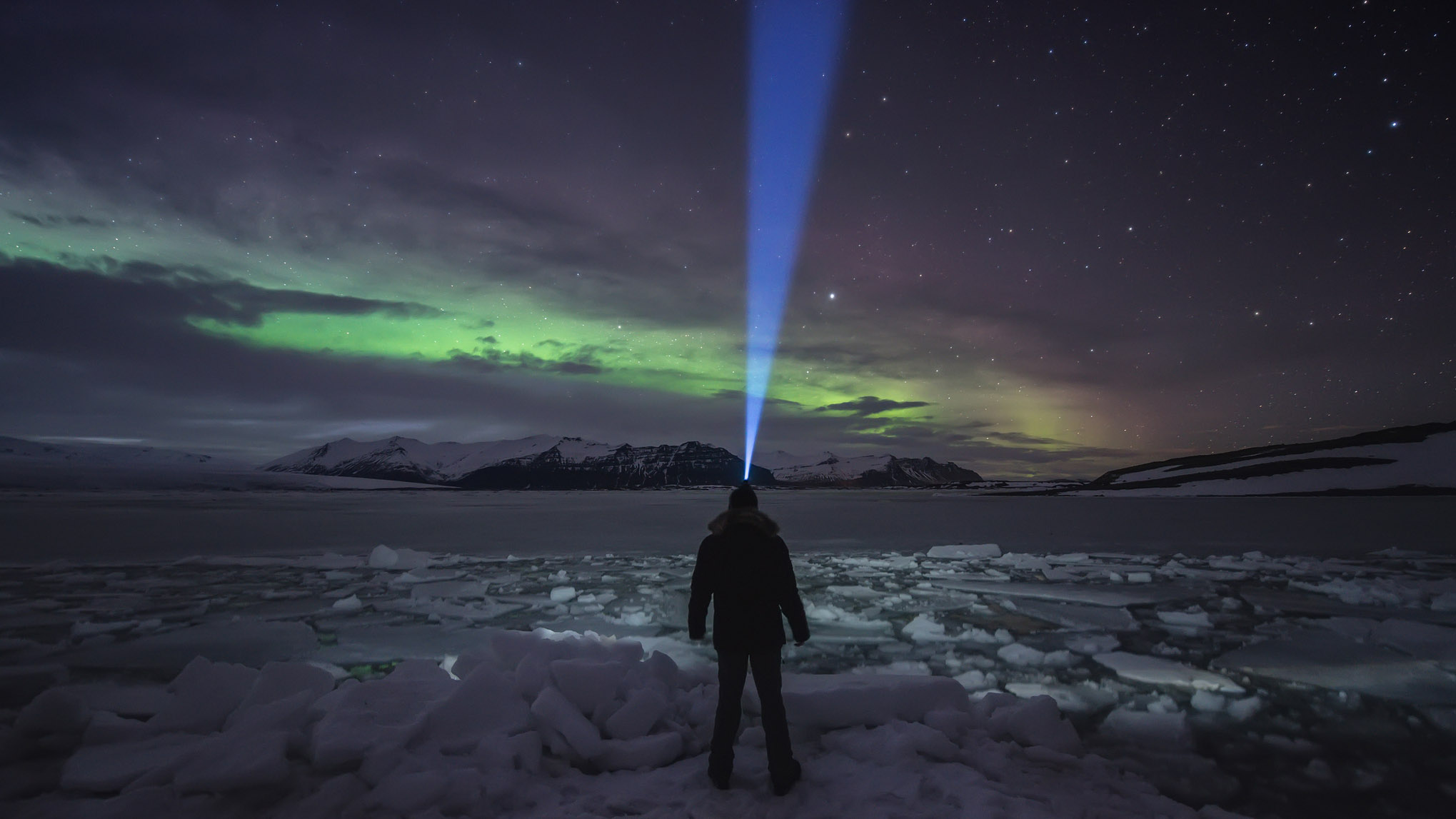
Beam and strobe options
Wondering how to read a map at night? The best head torch options will offer at least two beam settings: 'flood' and 'spot'. The flood setting casts the light wide and is ideal for reading things like books or maps. Your adventurous buddies will thank you for the flood setting too, as it allows you to look at them in the tent or on the trail without burning their eyes out – always a bonus. The spot setting projects a concentrated and narrow beam, just like a spotlight on a singer at a concert. It's perfect for illuminating the trail up ahead, or zeroing in on something in the distance.
Besides these settings, you should also look for a lamp with a strobe setting, which is a very visible blink or flash mode that can be sustained for ages by a battery and is useful for road safety and emergency signalling.
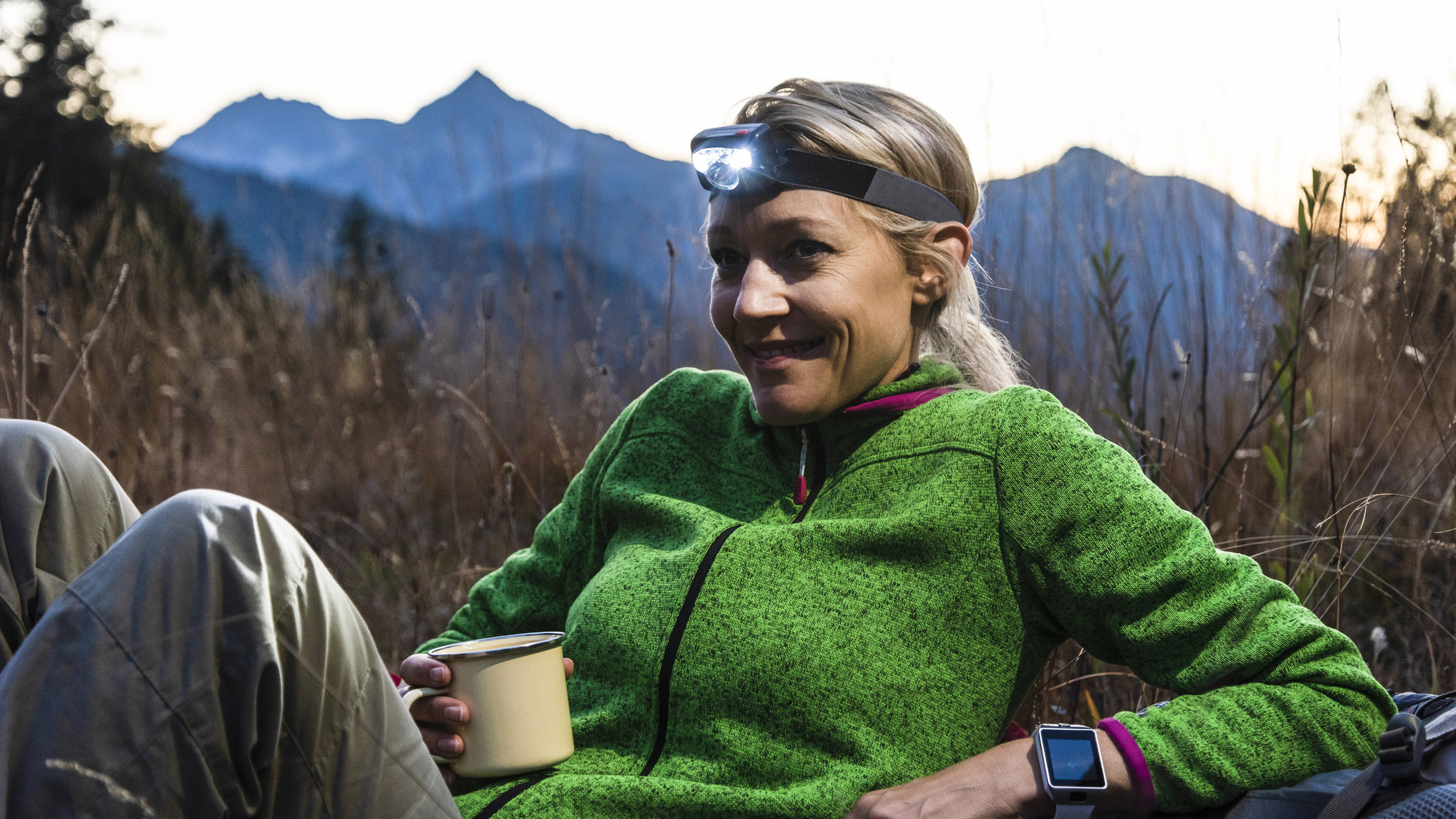
Night vision
Camping and hiking technology have come on leaps and bounds in recent years and the best headlamps are no different. Most of the best headlamp options will have at least one colour setting, which is usually red but sometimes green and/or blue too. These allow you to turn the torch on while you’re out on the trail walking in the moonlight, or navigating by the stars, without completely blowing out your natural night vision. After all, your sensory ability to see in the semi dark is better than you might think, improves over time but is easily shattered by unnatural light. Again, this is something your friends will thank you for, as it is also a useful function for getting enough ambient light in a tent to find what you’re looking for in the middle of the night, without waking everyone else up. No one wants grumpy camp mates.
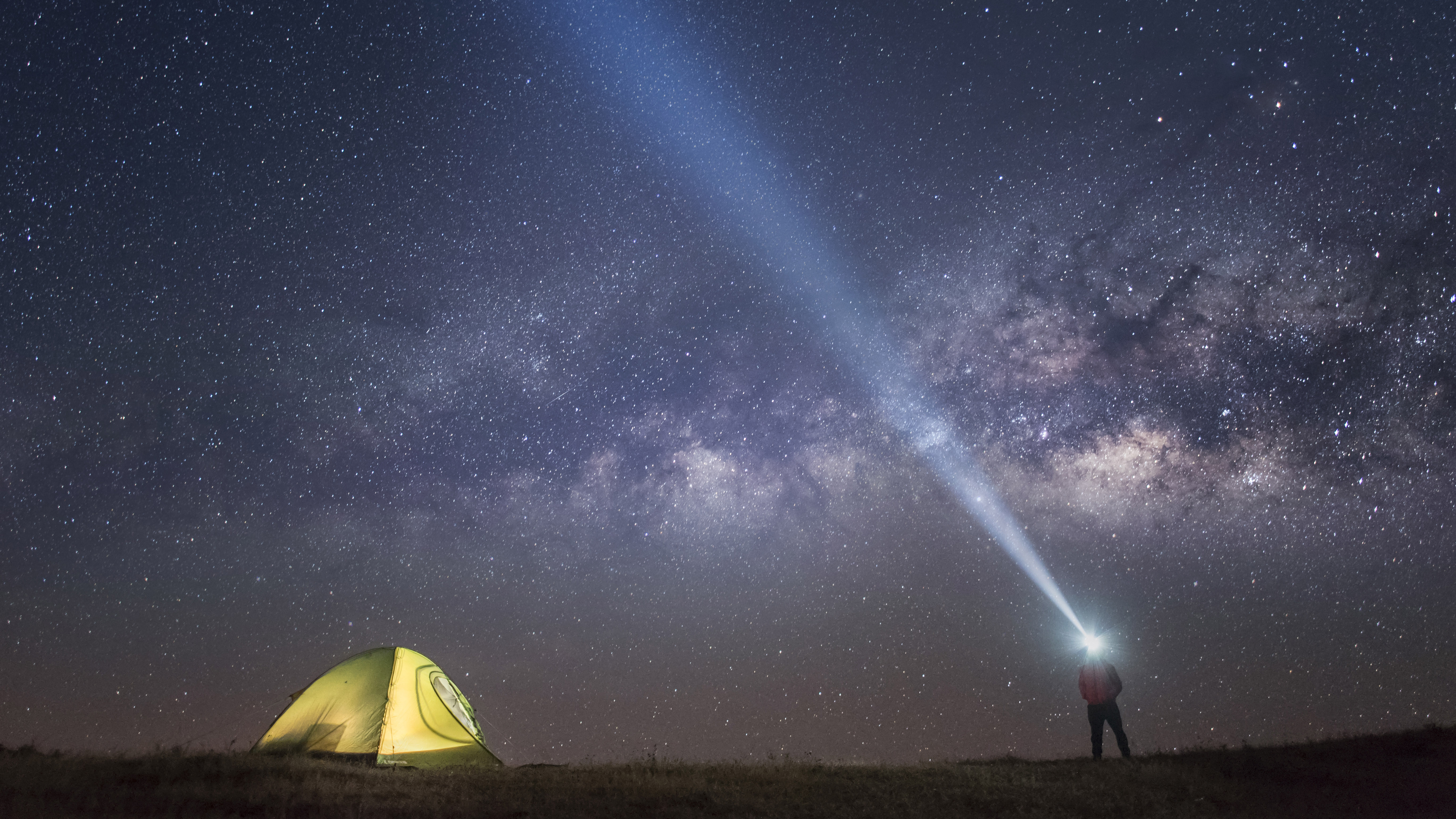
Rechargeability
Some of the best headlamps available today have bespoke battery packs – either completely integrated into the lamp, or removable – that can be recharged from a range or power sources, including USB ports. This is great, of course, but even better are the ones that allow you to also use standard AAAs as well, because then you can take back-up batteries and not fret about being left in the dark out on the trail on longer adventures.
If you're out in the wilderness and your headlamp or batteries need to be recharged, the best solar chargers allow you to harvest the sun's rays during the day, in order to charge up your devices ready for the night.
Head harness
Unsurprisingly, the head band is a crucially important element of the best head torches. No matter how good and bright a lamp is, you’re not going to wear it on your head if it’s brutally uncomfortable. If you find yourself carrying it around in your hand, then you have entirely missed the point of this tool. An easily adjustable head harness is ideal, and the option to have an over-the-top-of-the-head strap as well as one that goes around will allow you to get a more secure and less bouncy fit, which is especially important for trail running.
Another consideration is the headwear you may wear on any given adventure. If you're taking on a spicy scramble at dusk, you might want to don a helmet. If it's brutally cold, you're gonna grab that hiking hat. The best head torch should be able to adjust to all these situations.
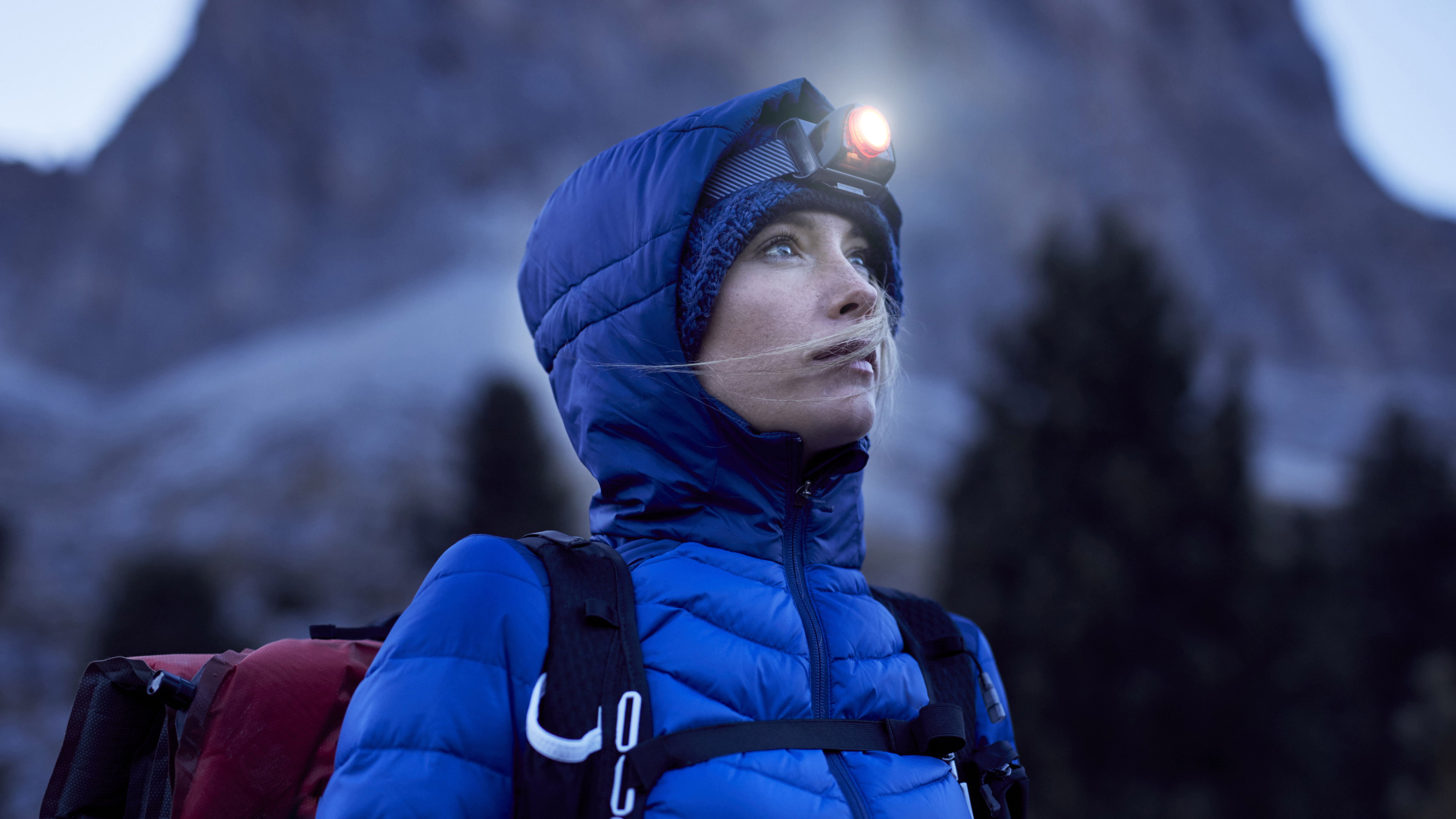
Functionality
As is the case with all the best camping tech, you will want a lamp that doesn’t demand a degree in physics to operate. Myriad setting options are all well and good, but simplicity can be better, with one easily located button that allows you to toggle through the various modes, all of which should have an obvious function.
Look for a lamp that swivels up and down, so you can point the beam at your toes, mid distance, or straight ahead at upcoming trails, depending on your requirements at any given time. Other functions that are handy are a lock out option (to stop the lamp getting accidentally activated in your backpack, draining the battery), a rear red light for safety while walking or running on roads and lanes at night, and a pre-programmed SOS flash option.

Waterproofing
While you can keep your headlamp in a dry bag (see our best dry bags) during the day, if rain is still falling when the sun sets, you need to be able to rely on your headlamp to repel the worst of the weather.
Quality headlamps are given an Ingress Protection (IP) rating, awarded by certified, independent companies after substantial testing. The acronym IP is followed by two digits, the first ranges from 0-6 and refers to resilience to solid particles (dust) and the second ranges from 0-9 and shows how water resistant a gadget is. Most head torches score between IPX4 to IPX6, which means they are resistant to water (higher that second number the better), but not waterproof. You'll find more on this in our guide on waterproof vs. water-resistant products.
The Black Diamond Storm, featured here, scores IP67, which means it is fully dust proof, and waterproof, submergible to 1 meter for up to half an hour. While this degree of robustness is reassuring – don’t dismiss lamps that score slightly lower. Unless you’re a caver or a kayaker, you shouldn’t need to submerge any of the best head torch brands, and so long as it can cope with a bit of weather, it’ll be fine.
What to do with your old headlamp
Headlamps can be hard to recycle due to all the different materials they contain, so if you're simply upgrading and your old one is still working, consider donating it to a thrift store, charity shop, scout group or outdoor gear exchange so someone else can enjoy spending time outdoors after dark. Just make sure that they accept electrical devices first.
If your old headlamp is broken, start by removing the battery and disposing of it safely. Most recycling centers have a place where you can leave lithium and alkaline batteries, and many supermarkets also have collection bins. Disposing of the rest pf the lamp is trickier. Some big-box stores like Best Buy have electrical recycling schemes, but these often don't take lights. Check your city or local authority's website to see your options. If you're in the UK, RecycleNow can show a map of recycling points near you.
All the latest inspiration, tips and guides to help you plan your next Advnture!

Author of Caving, Canyoning, Coasteering…, a recently released book about all kinds of outdoor adventures around Britain, Pat has spent 20 years pursuing stories involving boots, bikes, boats, beers and bruises. En route he’s canoed Canada’s Yukon River, climbed Mont Blanc and Kilimanjaro, skied and mountain biked through the Norwegian Alps, run an ultra across the roof of Mauritius, and set short-lived records for trail-running Australia’s highest peaks and New Zealand’s Great Walks. He’s authored walking guides to Devon and Dorset, and once wrote a whole book about Toilets for Lonely Planet. Follow Pat’s escapades on Strava here and Instagram here.
